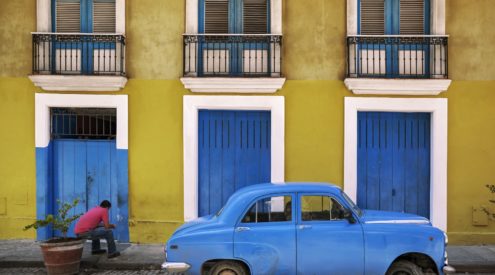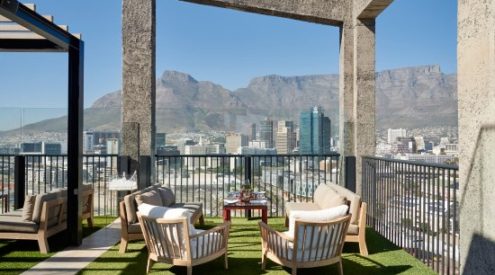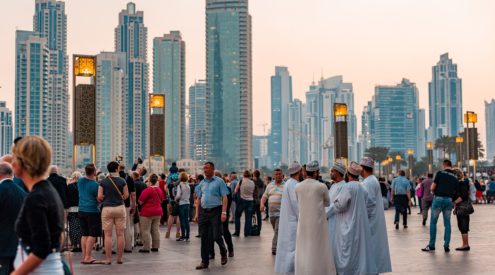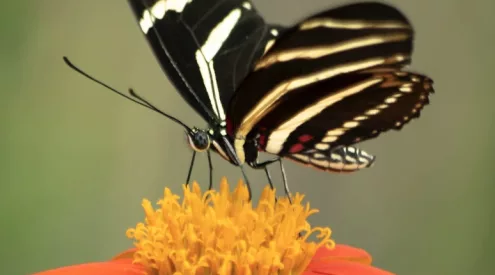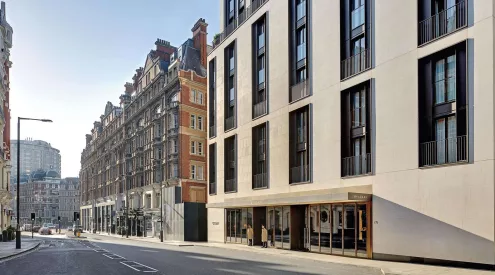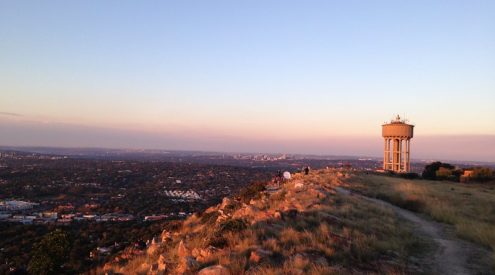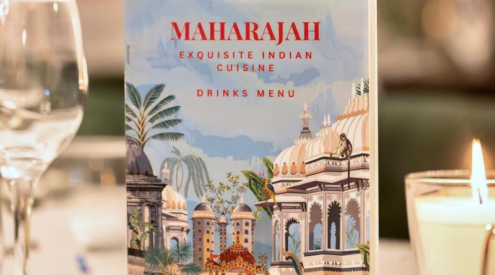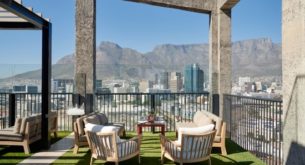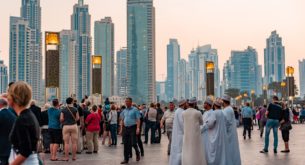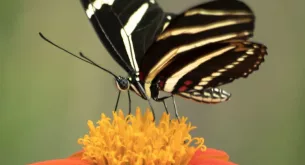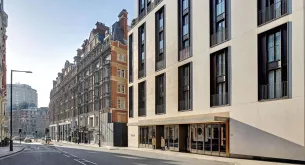‘He’s the master Yoda of tea,’ said Nick. I never found out his surname but Nick and his girlfriend, Anna, were my treehouse neighbours at an Edenic spot called Dikwella (a postcard-perfect seaside town in the south of Sri Lanka.) The Belgian couple were at the end of their two week trip whereas I was at the beginning, so I greedily harvested advice. Formerly known as Ceylon, Sri Lanka is famous for its tea, just as Ethiopia is renowned for its coffee and France for its Champagne. The Yoda they were talking about is one Mr Siva Rajha from the Uva Halpewatte Tea Factory in Ella, a small tumble-down town perched in the cooler hill country. Nick advised I go early to see the tea in production because it would otherwise be a boring warehouse tour of tight-lipped machinery.
‘Why Yoda?’ I asked. ‘Because he’s old, wise and knows everything about tea, of course.’ Travelling with my aunt, Nicky de Fitte, our journey began in the bustling capital of Colombo. The cheapest way to get to the tea region in central Sri Lanka also happened to be the most scenic – by train. I didn’t want to miss the views as the train climbed upwards and eastwards, so we spent a night in the suburbs and caught our train at 8.30am. It would take seven hours.

The tea fields around the Heritance Tea Factory in Nuwara Eliya are more than 2,000 metres above sea level. Image by Melanie Van Zyl
At first we passed urban wash lines and then dull farmland, but soon the train tracks ribboned past lakes and landed us in Kandy, ‘a city that looks good even when it’s raining’, according to Lonely Planet. We stayed inside the station but I spotted market stalls dripping with fruit, and colourful shrines outside homes lining the railway track which hinted at the far more spectacular temples Kandy is famous for.
The train to Ella (ours was blue and second class with a price tag of R50) is Instagram-famous and an attraction in itself. It was brimming with tourists – more international than local – with a GoPro or smartphone sticking out of every window. Luckily, this didn’t detract too much from the experience. The best part was that I could hang out of carriage doors to take it all in – the smells, the weather and the rush of my feet dangling just above the blurred rails. You could never do this in Europe, I thought, feeling at home with the relaxed lawlessness so familiar to us in South Africa.

The view from a second-class carriage is invigorating (first class is air conditioned and the windows don’t open). Image by Melanie Van Zyl
We passed waterfalls and bone-grey warehouses, which I later identified as tea factories. Buddhist monks walked the tracks and sari-swaddled women picked tea leaves from low bushes in pea-green plantations, tossing the leaves over their shoulders into baskets held in place by headbands. Our second stop was at the town of Nuwara Eliya. Known as the ‘Little England‘ of Sri Lanka, it has a climate vastly different to the coast and on our arrival wore a jacket of mist. We splurged that night and took a room at the old Heritance Tea Factory on Hethersett Tea Estate, in order to understand the history of these hills, before seeking out Yoda in nearby Ella.
The railway system was built by the British in the 1800s to transport tea down to Colombo for shipping back to England and further afield. It’s been 150 years since tea was first planted in Sri Lanka, changing its history forever – the jungle was tamed to cater for the far-flung taste for tea, and ‘Little England’ was born.
Our accommodation on Hethersett harked back nearly a century. Fine wood covered every surface, along with sumptuous vintage decor, and butlers stood in every corner, reminding me of the colonial days of this hill country. Our room was in the factory’s former withering loft, where freshly picked leaves were left to dry, aided by the sun that streams through tall windows. Now those same windows offer views over hills that appear to exhale cool, ethereal mist. Aunt Nicky and I sat beside a fireplace to warm up (temperatures here can drop to 10˚C at night). We sipped arrack, a slightly sweet, double-distilled liquor made from coconut, to celebrate our first night in this evocative pocket of the island.

This train was waiting to cross the famous Demodara Nine Arch Bridge outside Ella. Image by Melanie Van Zyl
The next morning we began our dive into the world of tea with a walk through the village. Our hotel guide explained that some tea bushes were more than 100 years old but still small because they were pruned to the ideal height (waist or eye level) for picking the sweet young leaves. Citronella is also planted to keep insects away, and trees puncture the plantations in places to reintroduce acid back into the soil. We passed school children in neat white uniforms and women clad in colourful cloth.
The majority of Sri Lankan tea workers are Indian Tamils, brought here by the British to work on the plantations. The women pick tea from 8am until 4pm, with breaks for lunch and, of course, tea. Working for about 600 rupees a day (the price of our train ticket), the women are required to collect an 18-kilogram bag of leaves, which amounts to just five kilograms of processed dried tea.
After the walk we were invited to a tea-picking activity offered by the hotel. It was unashamedly touristy, and surprisingly enlightening. We dressed up in saris, carried the baskets using our foreheads and tried to find and pick the most precious tips of tea – the first two or four newly sprouted leaves. It made me realise the hard labour that goes into every cup of tea. The basket was heavy, wind whipped at my sari and my back took strain from bending.
To my knowledge, a machine can’t identify and pick the crucial leaves needed for a top brew. There’s understandably controversy over labour rights and the living conditions of plantation workers, and it was no surprise that there were mostly older folk in the fields as youngsters opt for more lucrative employment.

Train ushers make sure everyone boards on time after buying snacks from platform vendors at Kandy station. Image by Melanie Van Zyl
The next day we hopped on the train again for a three-hour, uphill trek to Ella, where we booked into a homestay. Google Maps reckoned it was just a one-kilometre walk from the station, so we shouldered our backpacks and began the trudge. What Google didn’t mention was the slope! After some serious climbing, past hanging bulbs of prickly jackfruit and houses on stilts, we knew we were truly in hill country.
Ella is a busy backpacker town set on a string of peaks, with panoramic views amid jungle vegetation dotted with waterfalls. There is one main road with a strip of eateries and shops decorated with bright lights. Aunt Nicky said it reminded her a bit of Sodwana Bay.
After a traditional breakfast of buffalo curd with palm treacle, dhal, rotis and a glowing morning view, we set off to meet Yoda. Our ever-smiling host at Idyll Homestay, Anil Kithsiri, organised a tuk-tuk and recommended a place for lunch too. I could smell the tea before we rounded the bend and parked at the factory.

During a tea tasting, the leaves are on display – the first cup has the less-fermented green tea. Image by Melanie Van Zyl
‘Four elements make for good tea: flavour, strength, quality and colour,’ said Yoda, Siva Rajha – a small, smartly dressed man in chinos and a collared shirt. Thanks to Nick’s advice back in Dikwella, we visited while the factory was in operation, and Siva interpreted every sound the warehouse machinery clanked out and eventually churned into a box of tea. I learnt that green tea and black tea come from the same bush – they are simply processed differently. We discovered that the softest silver tips that go into white tea make it the least processed beverage, and deemed to be the best of all.
The tour was followed by a tasting of four teas, served in simple white teacups. The correct thing to do is slurp it noisily, almost using your lips as a straw, so the tea washes across your tongue. The darker ones were strong and I found them bitter (no milk or sugar), but Siva’s enthusiasm rubbed off on me and I bought several to take back home.
Our tea tour done, we took a 10-minute tuk-tuk drive for a cooking class and a lunch of dhal curry. Matey Hut doesn’t look like much from the outside, and a health inspector would have paled at the sight of the ramshackle interior, but learning about local ingredients and making my own curry was a wonderful way to end the day.
We caught a tuk-tuk back to the station (lesson learnt), and on the way stopped to buy fruit from a vendor. We pulled our jerseys closer as the wind whipped and swirled off the hills into the back of the tuk-tuk, thick with the aroma of tea. Sitting on the train waiting for it to leave for Colombo, I watched entrepreneurs on the station platform selling lentil cakes and fritters, and spiced peanuts in folded newspaper pockets. A local family sat together sharing cups of tea from a battered old ask on the journey west. They savoured the liquid, brewed from tea leaves that in all likelihood hailed from these very hills. I knew I would never drink a cup of tea in the same way. Every mug of Ceylon would hold a swirling mist of milk and every sip of green tea would taste fresh and aromatic, like those small, soft leaf tips I learnt to pick on the hills in Nuwara Eliya, just after dawn.

We made our own curry under the guidance of Aunty Madu at Matey Hut. Image by Melanie Van Zyl
Plan Your Trip
Getting There
I flew Emirates to Colombo for R7,200 (included a Discovery Vitality discount). emirates.com
Need To Know
South Africans need a visa (R440). Apply online July to October is monsoon season – generally avoided, but I went in September and it was wonderful. Ask your hosts to arrange meals for you – often the most affordable and best meals of my trip. Booking train tickets is confusing, so enlist the help of your host or a local to buy them at the station. I preferred second-class because it was cheap (R50 pp) and I could open the windows and move around freely. Use tuk-tuks for short distances in town – they’re easy and affordable; buses are cheaper but less comfortable. Pricier private taxis (sedans) can be organised by your hosts. Uber operates in Colombo.

You’ll definitely meet tea pickers if you walk around the hills of Ella. Image by Melanie Van Zyl
Stay Here
The Little Townhouse is set in the heart of Colombo in a peaceful neighbourhood. The hosts helped to book my train tickets and gave valuable advice. From R245 per person. sharing, including breakfast. airbnb.com
Heritance Tea Factory is an elegant hotel in Nuwara Eliya. Breakfast was an all-out affair with both local food, such as ‘hoppers’ (a bowl-shaped egg pancake), and Western options. I loved the guided early-morning village walk (free). From R1,050 per person sharing B&B. heritancehotels.com
Idyll Homestay. This simple spot in Ella offers great value for money and excellent views. The hosts were helpful and arranged our tuk-tuks too. From R190 per person. sharing. idyllhomestay.strikingly.com

This swish room was once a tea-drying loft, at the Heritance Tea Factory hotel. Image by Melanie Van Zyl
Do This
See, smell and taste tea. Uva Halpewatte Tea Factory in Ella offers a tour. Go early – it opens at 8am. Don’t go on Sunday – the factory doesn’t operate, even though there are tours. R57 per person. halpetea.com
Walk everywhere. Ella is known for its rolling hills, waterfalls and viewpoints. Little Adam’s Peak is the most popular climb and offers superb views. At the start it goes through tea plantations, then a moderate ascent with many steps. visitella.com
Cook like a Sri Lankan. Matey Hut in Ella is a roadside shack that serves great food and its cooking course, given by a wonderful host, is superb. We made six local (vegetarian) dishes, including curries with sambals, and fresh coconut milk using an old-style grinder. Lunch and the two-hour lesson costs R170 per person… Find it on Facebook.

